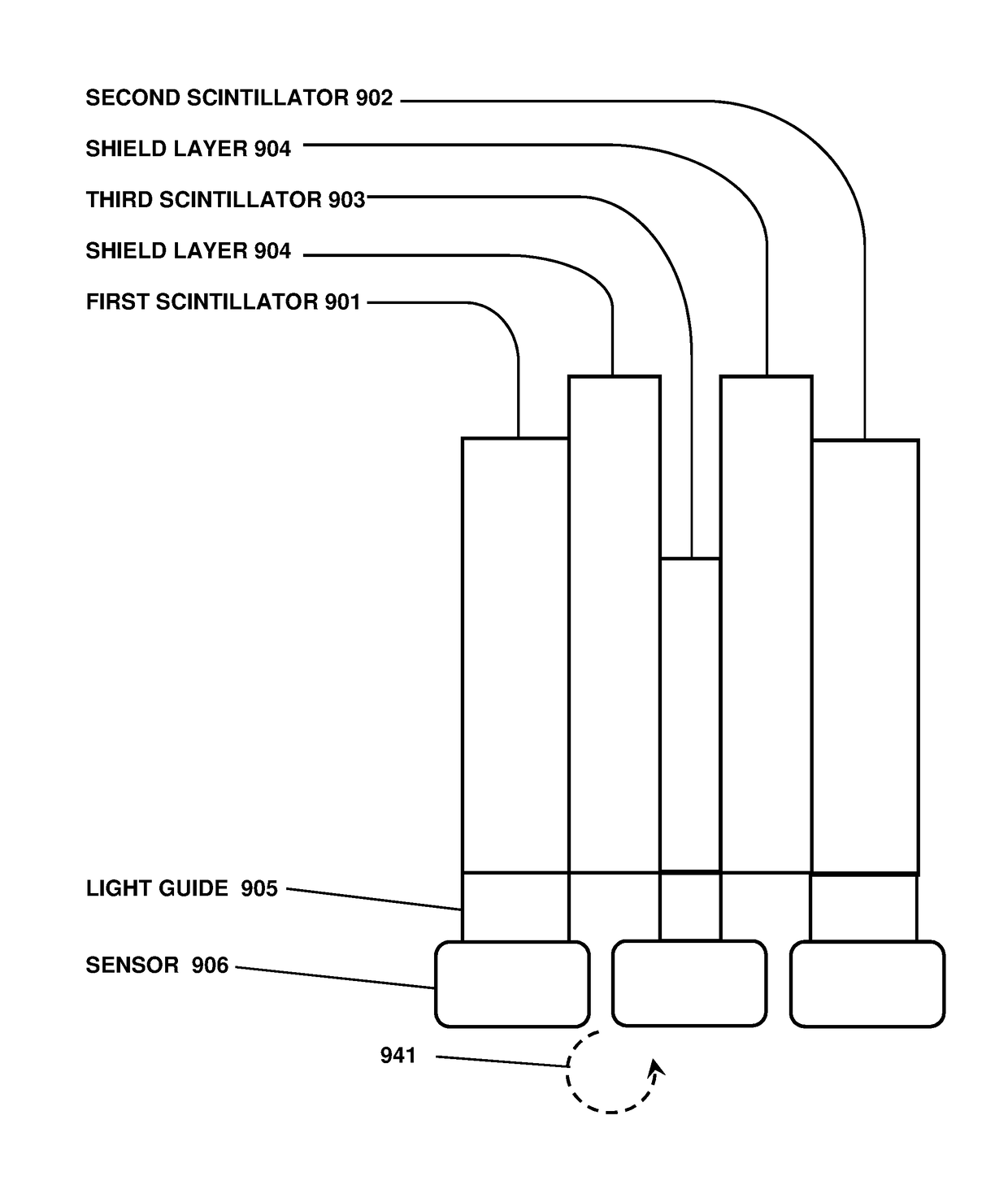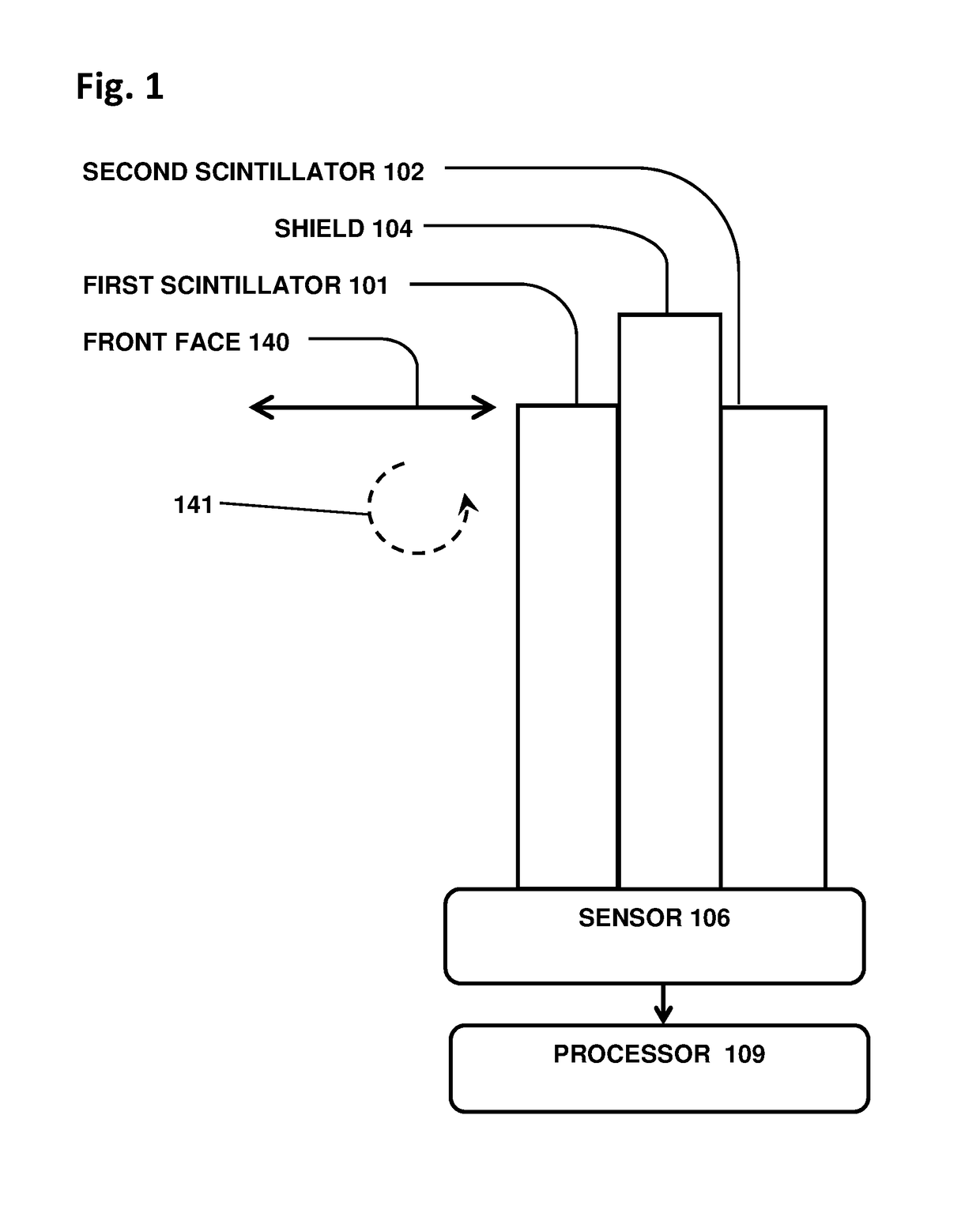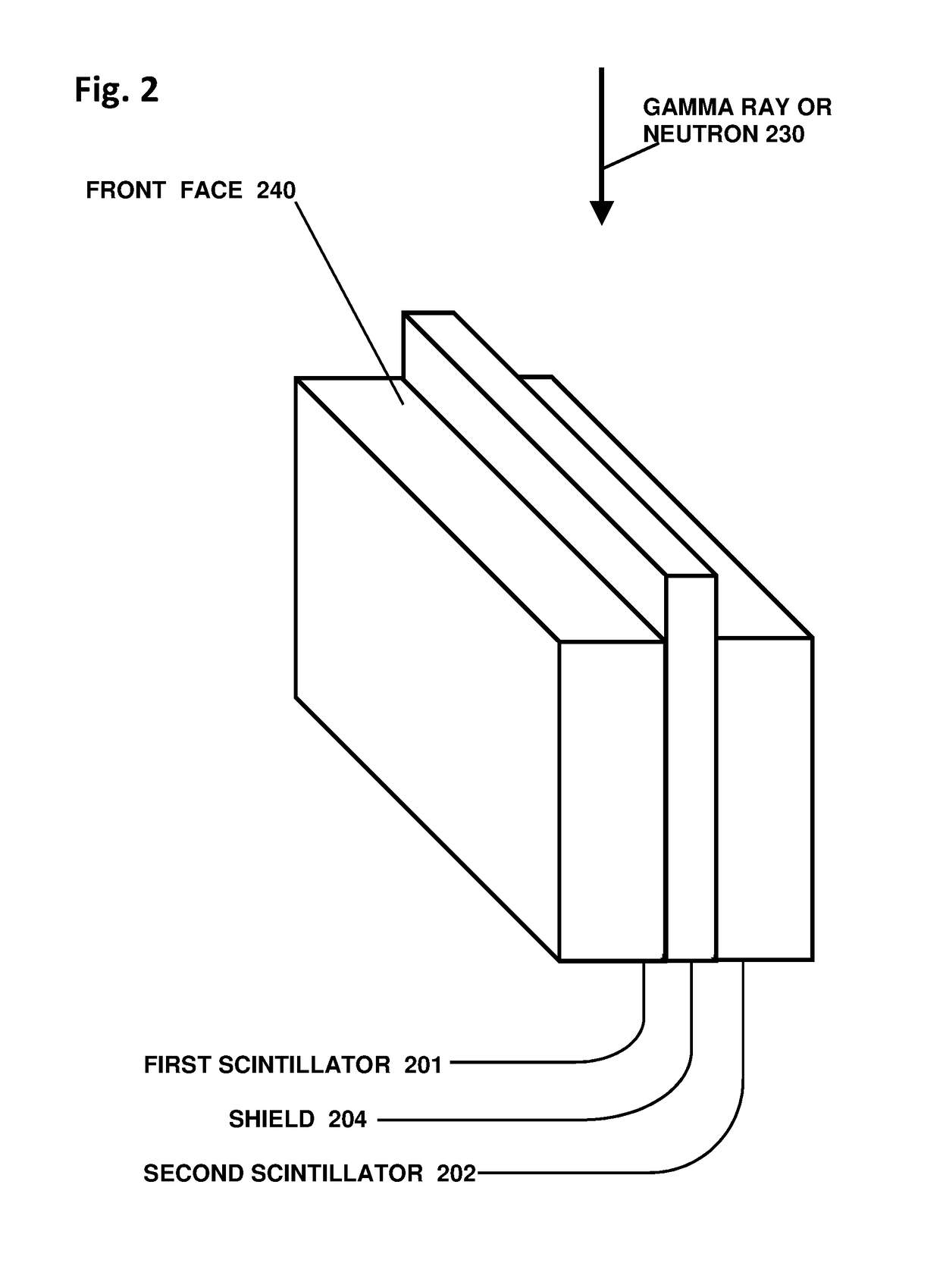Directional particle detector with shield and scintillators
a detector and scintillator technology, applied in the field of particle detectors, can solve the problems of difficult detection, truncated field of view, and inefficient systems, and achieve the effects of high detection efficiency, high detection efficiency, and high angular precision
- Summary
- Abstract
- Description
- Claims
- Application Information
AI Technical Summary
Benefits of technology
Problems solved by technology
Method used
Image
Examples
Embodiment Construction
[0069]The inventive detector is a geometrical radiation-source direction-finder based on an occluding shield flanked closely by two scintillators. Particles, particularly gammas or neutrons, arrive at the detector from a radioactive source at an unknown location. The arriving particles can strike one of the scintillators directly, and are prevented from reaching the opposite scintillator by the shield. Particles arriving from the opposite side are likewise able to reach only the second scintillator. Signals from the two scintillators thus reveal the general left-or-right direction of the gamma source relative to the initial detector plane. Then, by rotating the detector in the direction indicated by the active scintillator, the detector can be brought into closer alignment with the source. The source can then be localized with high precision, using methods that exploit the parallel-planar symmetry of the detector.
[0070]Optionally, the shield may protrude beyond the edges of the scin...
PUM
 Login to View More
Login to View More Abstract
Description
Claims
Application Information
 Login to View More
Login to View More - R&D
- Intellectual Property
- Life Sciences
- Materials
- Tech Scout
- Unparalleled Data Quality
- Higher Quality Content
- 60% Fewer Hallucinations
Browse by: Latest US Patents, China's latest patents, Technical Efficacy Thesaurus, Application Domain, Technology Topic, Popular Technical Reports.
© 2025 PatSnap. All rights reserved.Legal|Privacy policy|Modern Slavery Act Transparency Statement|Sitemap|About US| Contact US: help@patsnap.com



